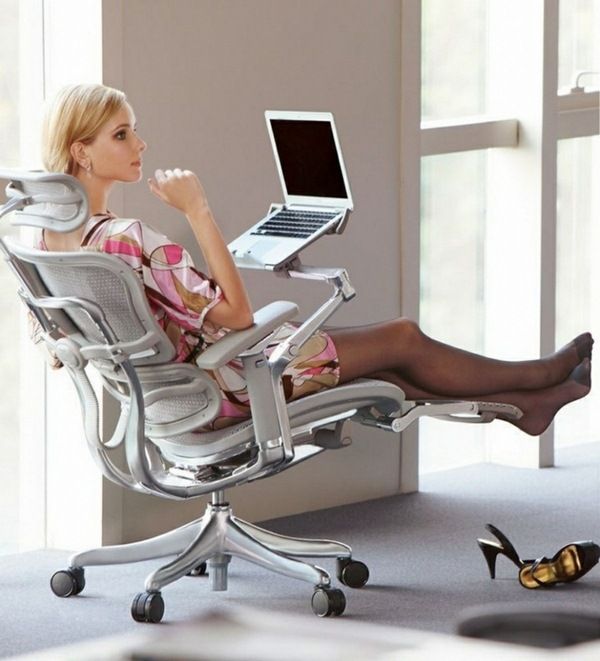Our work habits looks very different today than they did 6 months ago. Many industries are encouraging employees to continue working from home, even as the economy begins to open back up.
This is an understandable necessity born of the need to socially distance in the time of Covid-19.
While many people are concerned with how to stay focused and productive when working from home, it’s just as important we think about how to keep our bodies healthy when working from home.
Most businesses and office settings are designed to ensure a comfortable, yet productive, working environment for their staff. From air filtration and ventilation systems that keep air clean, to the investment in ergonomic chairs, chairs and other furniture that keeps us sitting up straight and focused. Investing in employee health, it turns out, is a great means of reducing staff turnover.
Our homes, not so much. For most of us, ‘comfort’ trumps ‘productive’ when it comes to our homes.
We work from the couch or kitchen table, hunched over our computers while trying to hide from our kids, who are also “working from home.” Home offices are a recipe for poor working posture and poor working posture is a recipe for pain. Since working from home may not be the “fad” we thought it would be and many employees may be making their situations permanent, we thought it was a good idea to give some tips on how to keep your back, neck, and entire body safe when working from an area meant for relaxing, not working.
Why Is Good Posture Important?
First, why is preserving your posture worth reading about?
Because maintaining good posture has a number of benefits while poor posture has significant pitfalls.
- Good posture helps you feel alert.
- It helps you undo the long-term damage of sitting.
- It also helps you avoid slouching, which in addition to stressing out your back, can affect your digestive system and ability to breathe deeply.
- Good posture means fewer aches and pains.
- Good posture means fewer headaches.
At home, slouching is often our default posture. And the temptation to work from the sofa with a laptop or use a footrest that misbalances your posture is all-too-great.
But, home comforts aren’t always great for your body.
How To Achieve Good Posture?
There are some immediate tips you can apply to help resolve your posture when at your work station (or right now!).
- Sitting up straight in your chair.
- Don’t cross your legs.
- Pull your chest up and your shoulders back (this achieves neutral alignment of your spine and torso.
- Lower or raise your computer monitor to eye level to keep your neck in a neutral position.
- Every so often, release any tension you might be holding in your shoulders, neck, or jaw.
- Keep your feet flat on the floor and your legs in line with your hips
- Angle your chair by ten degrees
Don’t forget to move! Getting up and moving every thirty minutes, perhaps for a drink of water, can help you alleviate some of the sitting pressure. You can test your alignment to gain a clearer picture of how your posture influences your day to day activity.
Posture Products For Your Home Office
Since you might be working from home for a while, it might be time to invest in products that will help maintain your posture.
Chairs
An ergonomic chair is a worthwhile investment, even though they can be a bit pricey. You might think sitting in a soft, well-cushioned computer chair is the best thing you can do for your body, but actually ergonomic chairs like the Steelcase Gesture or Leap, or Herman Miller Aeron, are harder and conform to the natural curvature of your spine while preserving its health. You can check out some of the best ergonomic office chairs here.

Standing Desks
Standing desks are a great investment for those who spend all day at a desk. Standing while working can improve your mood and energy levels, and prevent the damage that comes from sitting all day. A CDC study from 2011 that confirmed the use of an upright desk as a way to lessen back pain. If you complete desk is out of the picture, consider a standing desk converter, like the one from Varidesk.

Good Lighting
Good lighting helps us focus, stay attentive, and reduces our tendency to slouch or lean forward to read better. It will also prevent eye strain. The 20-20-20 rule can also work well here. Every 20 minutes, you aim to look at something 20 feet away for 20 seconds. You can also use apps like Flux to help avoid absorbing too much blue light if you’re on your computer in the evening, as this can harm your circadian rhythms.
Stay Active
It can be hard to stay active when we rarely leave our house. But don’t be tempted to head from your desk to your couch.
Setting up a home gym can keep you active and doing some yoga poses throughout the day can shake the cobwebs from your body.
If you’re standing more, don’t forget to make sure you’re supported. Use the sole selector to find the right support for your favorite shoes. An insole will provide a platform for your natural arches. Simply accepting calls while standing and pacing can help many reassert their natural posture.
A strong core will also help to prevent slouching so try these exercises to improve your posture:
- Squats
- Planks
- Sit-ups
Making these simple changes can make a difference in both the short and long-term and right now taking care of your health should a number one priority!

























































